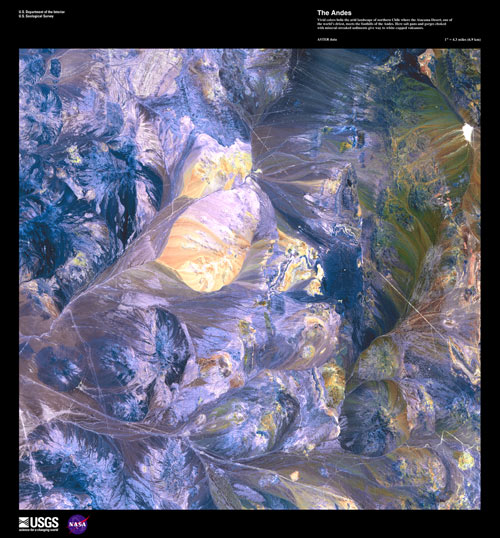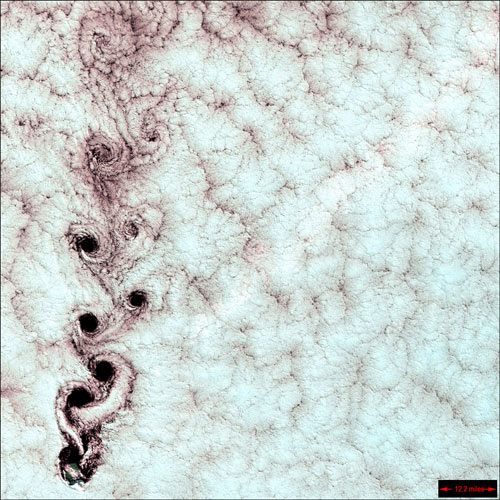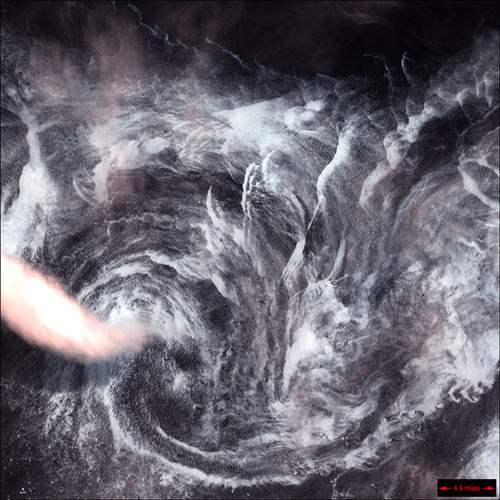Lost in Space
By:
November 22, 2010

[The Andes, 10/28/01 ASTER]
LandSat’s views of Earth have been made increasingly available over the internet in low-resolution image galleries, suitable for wallpaper, screensavers, and screening portions of the planet on a monitor near you. Or a wall . . .

[David Bowie in The Man Who Fell to Earth, dir. Nicolas Roeg, 1976]
Nominally these are of the land (and sea), although they do of course record the in-between. I find the portraits of the air especially lovely, ephemeral vortices and whirlpools whose curves belie their strength.

[Karman Vortices, Alexander Selkirk Island (Pacific Ocean), 9/15/1999]

[Whirlpool in the Air, Greenland, 5/14/2001]
But I wonder too, what if LandSat (or something like it) could be programmed to project? What if an orbiting satellite could be fitted with a region-sized projector that could, without losing resolution and brightness, beam the transmitted images back on top of the places they are from, like a digital version of Borges’ Map? Would this be an aid to knowledge, overlaying an aerial perspective directly onto more finely-grained experience? Would it be a visual phenomenon on a grand scale, a double-rainbow of detail and wonder?

[The Weather Project, Olafur Eliasson, exhibited at the Tate Modern, 2003-04]
Perhaps one might feel closer to the environment by walking through it as well as upon it. And the projection might be made “clickable,” an immersive mashup, a projected kinectable journey. Or — would it be instead an alienation of light; inevitably coopted by advertising, something to be subverted and dismantled, surviving only in fragments of lost potential and packaging?

[The Sony Center colonizes the sky, Potsdamer Platz, Berlin]
In any case it wouldn’t be exact. Even with the most powerful processors, projections beamed back upon the place beneath lag behind their captive data; all records are records of the past. The mirrors on our ceiling are never maps of where we’re going, or even where we are; only where we’ve been.
But even if such a feat were feasible, it would only be viewable at night, where it would interfere with the projection we already have. On a larger and more ancient scale, the stars project a history of deep time across the upturned faces of land, sea and eye.
We may be lost in space, but we do have the Map.

[Large Magellanic Cloud, Hubble Space Telescope]

[Sledgehammer, Peter Gabriel in starsuit, 1986]
